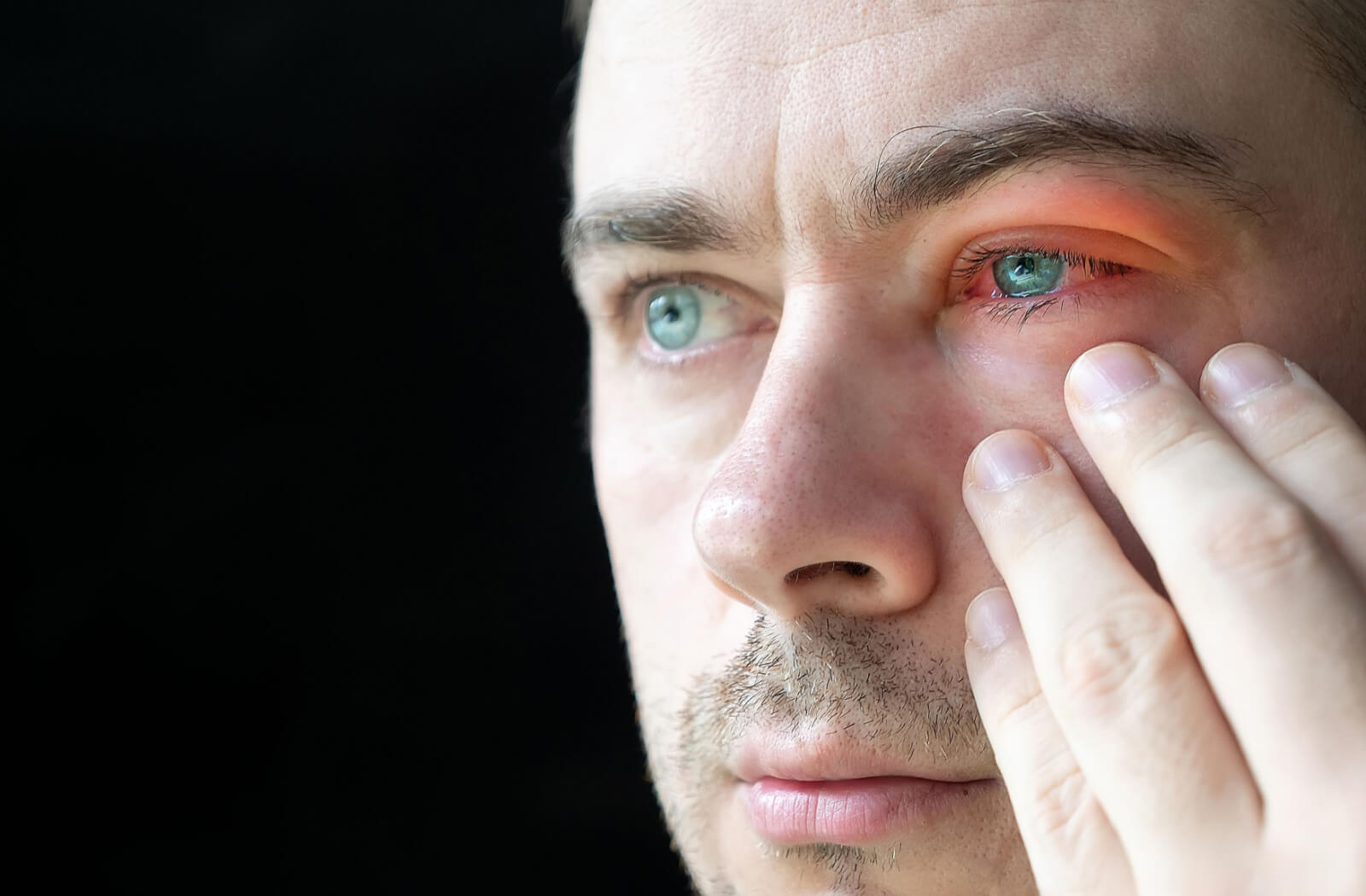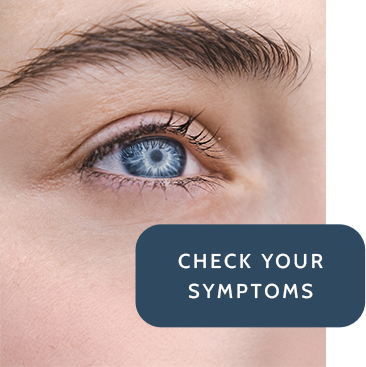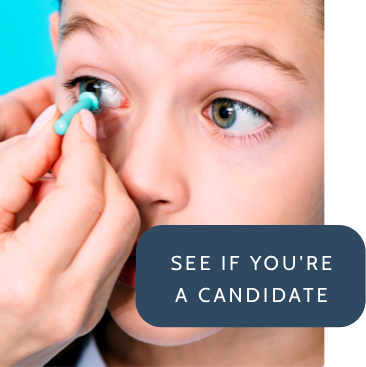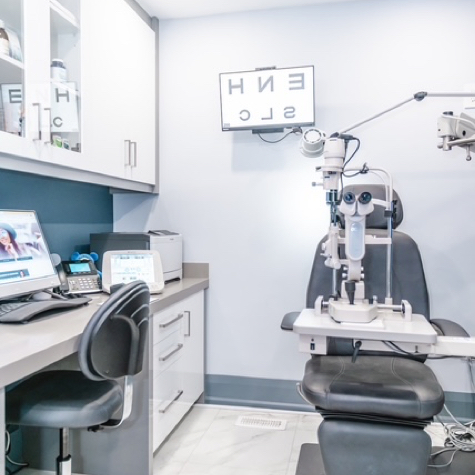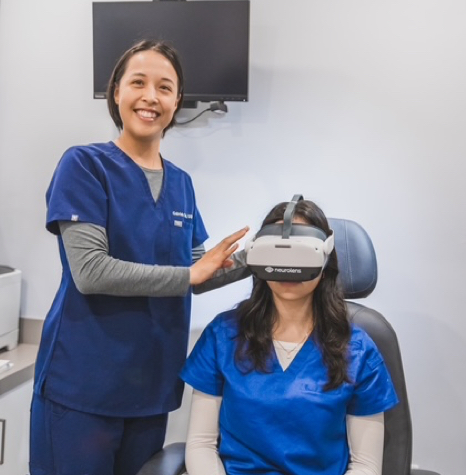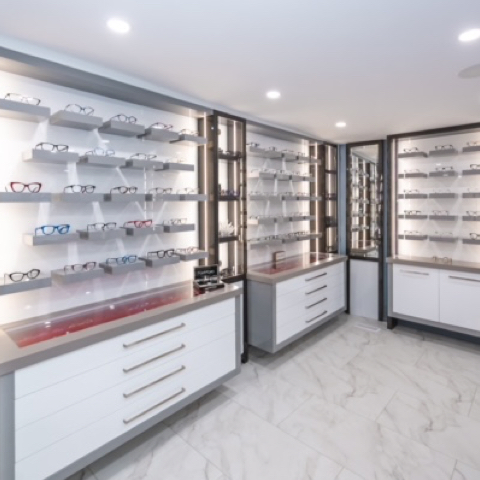The Purpose of Blinking
Blinking is an essential part of eye health and function. Your eyelids protect your eyes from debris and spread nourishing tears across the surface of your eye. The average person blinks 15–20 times a minute. If you blink more than the average, that may be normal for you.
But blinking more can also be a symptom of an eye condition, like blepharitis, dry eyes, or digital eye strain. If your blink rate is bothering you or you’re unsure if it’s a concern, talk to your optometrist and find out if you have one of these common eye problems!
Eye Conditions That Cause Frequent Blinking
Your optometrist can assess your eyes and vision to determine if your blinking frequency is a concern. Blink rate can be affected by your mental or physical health: fatigue and stress or neurologic conditions can cause you to blink more. But blinking a lot can be caused by common eye problems.
Blepharitis is a chronic inflammation of the eyelids. When bacteria collects on the eyelashes and eyelids, it can lead to inflammation and infection. This inflammation can also clog the meibomian glands, which produce the oily part of your tears. Without the oily layer (meibum), tears evaporate too quickly. As a result, your eye may not receive enough nourishment and moisture to stay comfortable and healthy.
Blepharitis and dry eye disease are often connected, although it can sometimes be challenging to tell which came first. Unfortunately, there’s no cure for blepharitis. But there are several ways to treat blepharitis to improve your comfort and reduce symptoms.
Cleaning your eyelids and lashes is an effective management method. Removing crusty buildup and bacteria with a warm compress or clean cloth can also help improve meibum (oil) flow. Your optometrist may also prescribe eye drops or antibiotic ointments to apply to your eyelid margins.
At Dr. Zargar Eye Care, we use the Zocular Eyelid System Treatment (ZEST). The in-office treatment cleanses the eyelids with an okra-infused product. The gentle process exfoliates the skin and removes unwanted bacteria and dead skin cells. You can book an appointment today to learn more about ZEST and if it may be appropriate for you.
Dry Eye
The tear film is a layer of tears spread across the eye when blinking. The tear film nourishes, moisturizes, cleans the eye, and supports clear vision. However, when you produce too few tears or your tears are missing components, you can experience dry eyes.
According to a 2019 Ontario-based study, approximately 6 million Canadian adults suffer from dry eyes.
Dry eye symptoms typically include:
- Blurry or fluctuating vision
- Burning or stinging eyes
- A feeling of something foreign in the eye
- A gritty or scratchy sensation
In response to dry eyes, some people experience watery eyes. Your tear production tries to compensate for the lack of quality tears with greater quantity, and you may blink more as your eyes try to produce more moisture.
When dry eyes go untreated, it can lead to corneal scarring and impaired vision. The condition also increases your risk of eye infection.
Fortunately, there are many treatment options for dry eyes, whether your symptoms are mild or severe. Talk to your optometrist for personalized recommendations.
Digital Eye Strain
Viewing digital screens changes how we blink. Instead of complete blinks (your eyelids touch), we tend to have incomplete blinks (your eyes remain slightly open). As a result, your tear film may not spread evenly across the eye, often causing dry eyes and increasing eye health risks.
You may find after long hours of working on a screen that you blink more. The bright light and intense focus can exhaust your eyes. While giving up screen time entirely is impractical, taking breaks throughout the day—even brief ones—can make a significant difference.
After prolonged screen time, take a moment to open and close your eyes fully. A complete purposeful blink spreads the tear film across the eye and can help reset your blink rate.
The 20-20-20 rule is a screen-break guideline recommended by the Canadian Association of Optometrists. For every 20 minutes of screen time, take a 20-second break and look at an object 20 feet away. Refocusing on a further distance helps your eye muscles relax. You can also add a stretch break or practice a few purposeful blinks for more benefits.
If you spend a lot of time with digital devices, whether for work or fun, you may consider computer glasses or blue light glasses. Computer lenses are task-specific glasses designed for computer work.
Blue light filters can help prevent the negative impacts blue light from your screen can have on your sleep-wake cycle. Blocking blue light may also protect your eyes from digital eye strain. Glasses, contact lenses, and screen filters reduce blue light exposure.
Eye Infection, Inflammation, or Injury
Blinking more may be a side effect of eye irritation. Your eyelids and tear film help protect, clean, and nourish your eye’s surface, so increased blinking can be in response to an injury or infection.
One common eye condition that can lead to frequent blinking is conjunctivitis (pink eye). The conjunctiva is a transparent tissue layer covering the front of the eye and inner eyelids. Conjunctivitis can make the eye appear red or pink when the conjunctiva becomes inflamed. The inflammation can be caused by allergies, infection, or chemical exposure.
While some forms of conjunctivitis can go away by removing an allergen or particle, others can severely affect your vision. Therefore, it’s crucial to have your eyes checked by an eye care provider and receive appropriate treatment.
Common symptoms of conjunctivitis are:
- Blurry vision
- Eyelid inflammation
- Red or pink eyes
- A scratchy or sandy sensation
- Watery eyes
A corneal abrasion is a scratch on the surface of your eye (the cornea). The cornea has many nerve endings and is sensitive to touch and pain, so even a minor injury can be irritating or painful. Abrasions can be caused by a contact lens, a scratch from a fingernail, or specks of particles (sand, dust) getting in the eye.
You may blink more as your eye tries to clean the surface and remove any foreign particles. Most minor scratches can heal on their own, but it’s crucial to have your injury assessed by an optometrist to help prevent worsening symptoms, infection, or a corneal ulcer.
Refractive Errors
Refractive errors are a common vision problem caused by an irregularly shaped eye. When light enters the eye, multiple parts work together to focus light on the light-sensitive tissue at the back of the eye (the retina). When light is focused incorrectly, either in front of or behind the retina, it can cause blurry vision.
Myopia (nearsightedness), hyperopia (farsightedness), astigmatism, and presbyopia are refractive errors.
An uncorrected refractive error can lead to excessive blinking. You may also squint more, trying to focus. You may already wear glasses or contacts, but your prescription may not be meeting your vision needs. Even a slight change can impact how your eyes feel and the effectiveness of your prescription.
Regular eye exams are essential for keeping your prescription updated.
Diagnosing Your Blink Rate
Blinking more than usual may be a temporary symptom of lack of sleep, stress, or dust in your eye. However, it can also be a symptom of a more severe eye health problem. If you’re concerned about how much you’re blinking, your optometrist can help.
At Dr. Zargar Eyecare, we strive to provide the best possible care for you and your family. Book an appointment today!

